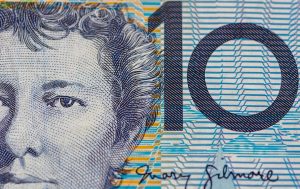In a highly anticipated move, the Federal Reserve held interest rates steady in its recent Federal Open Market Committee (FOMC) meeting. The central bank’s benchmark overnight borrowing rate remains in the range of 5.25%-5.5%, a level it has maintained since July 2023. This decision comes amidst expectations of multiple rate cuts before the end of 2024, marking the first reductions since the early days of the Covid pandemic in March 2020.
The Fed’s “dot plot,” a matrix of anonymous projections from the 19 officials of the FOMC, signals three quarter-percentage point cuts by the end of 2024. While the timing of these cuts is not explicitly indicated, futures markets are pricing in a nearly 75% probability of the first cut occurring at the June 11-12 meeting. Fed Chair Jerome Powell emphasized that the cuts are contingent on the economy evolving as expected and underscored the Fed’s readiness to maintain the current rate range if necessary.
In addition to the rate decision, the Fed updated its economic projections, indicating a more optimistic outlook. GDP growth for this year is now expected to be at a 2.1% annualized rate, a significant increase from the 1.4% estimate in December. The unemployment rate forecast has been slightly lowered to 4%, while core inflation, as measured by personal consumption expenditures, is projected to rise to 2.6%.
The FOMC’s statement highlighted the strength of the job market, upgrading its assessment to “strong” from the previous characterization of “moderated.” This unanimous decision to maintain rates reflects the Fed’s cautious approach, with a focus on ensuring that inflation continues to move towards its 2% target sustainably.
The financial markets reacted positively to the FOMC’s decision, with the Dow Jones Industrial Average finishing the session up by over 1%. Treasury yields, on the other hand, headed mostly lower, with the benchmark 10-year note at 4.28%.
Performance of the US Dollar
Following the FOMC decision and Fed Chair Jerome Powell’s comments, the performance of the US dollar was notably mixed. The dollar index initially saw gains but reversed as short-term Treasury yields fell. Powell’s remarks emphasized a careful and data-driven approach to monetary policy, which influenced the dollar’s movement against major currencies:
- EUR/USD rose by 0.45%, erasing earlier losses and finding support at key technical levels.
- USD/JPY initially approached its recent peak but then retreated, indicating a fluctuation in investor sentiment.
- GBP/USD experienced an intraday reversal, gaining strength after a significant drop following UK inflation data.
Looking ahead, the Fed’s balance sheet reduction program, often referred to as “quantitative tightening,” is also under consideration. With about a $1.4 trillion drawdown in the Fed’s holdings since June 2022, Powell indicated that the pace of runoff might slow down soon, in line with previous plans.
As the Fed steers the US economy through uncertain waters, its decisions and projections provide valuable insights into the future of economic growth. The focus on data-driven policymaking and the willingness to adjust the course based on evolving conditions underscore the Fed’s commitment to fostering a stable and prosperous economic environment.
In the broader context of global central bank decisions, the Bank of England, the Swiss National Bank, and the Norges Bank are also expected to deliver their verdicts this week, adding further dimensions to the evolving monetary policy landscape. As the Fed charts its course, the financial markets and policymakers worldwide will closely monitor its impact on the US and global economies, as well as the performance of the US dollar.





